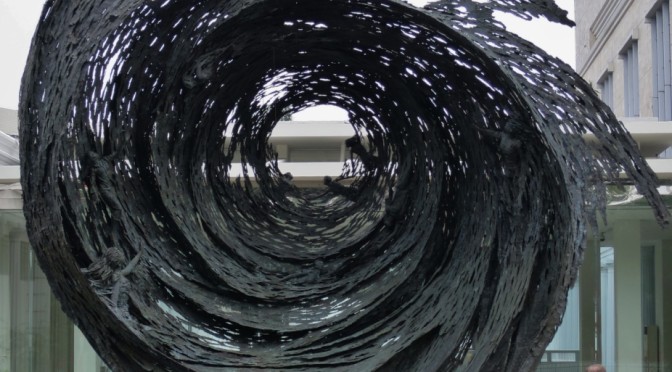I love the hunt of doing research about objects in the museum and then the delight of the FIND. And what a find. At the moment, inspired by the collection at Museum Balanga in Palangkaraya, I’m researching fibre – bark cloth and rattan mats — ones from Central Kalimantan of course.
Detail: Central Kalimantan, Borneo, Indonesia – region of Kota Waringin Barat highlighted (Google Maps)
In former times the Dayaks of Central Kalimantan wore war clothing made of bark and animal skin adorned with metal. In the collection of Museum Balanga there is a superb Baju Perang (war jacket) which is part of the Dayak kit for war. The kit is currently on display and includes a penyang talisman – a woven belt decorated with small cowrie shells with a shell and pig tusks attached – and weapons such as a mandau, dohong and a sword (pedang).
This Baju Perang is from the region of Kota Waringin Barat and is painted with powerful decorative motifs that protect the wearer when they are at war or fighting. It is made from twined bark fibre made with a warp wrapping technique. [1] The source of the fibre is the tengang vine.
Baju Perang (War Jacket) Front view with penyang and rear view. Photos courtesy Museum Balanga & John Boyd Macdonald, www.jokar.com.au
Imagine my delight when I saw these photographs reproduced in my new favourite book Plaited Arts from Borneo. The faded war jacket from Sampit is dated 1910. Sampit is about three hours from where we live in Tangkiling. The detail of the more vibrantly painted war jacket is from Melawi, West Kalimantan. The later jacket is in the collection (No. 5963) of the Museum Nasional, Jakarta.
[1] Sellato, Bernard Appendix: Borneo Life and material culture in Sellato, Bernard (ed) in Plaited Arts from the Borneo Rainforest, Jakarta: Lontar Foundation in Association with NUS Press, c2012, 504

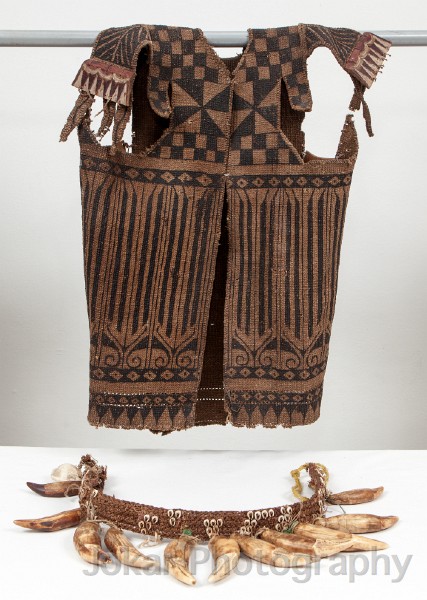
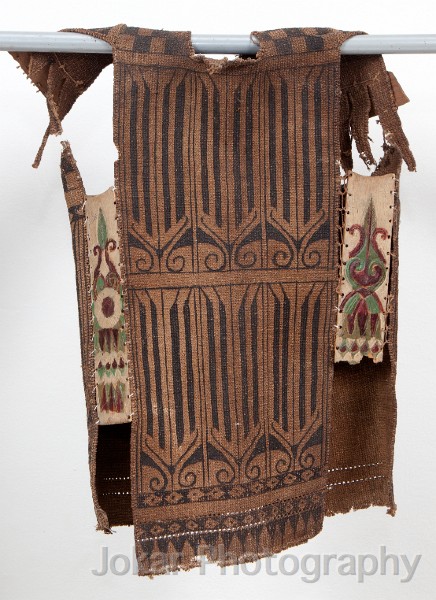

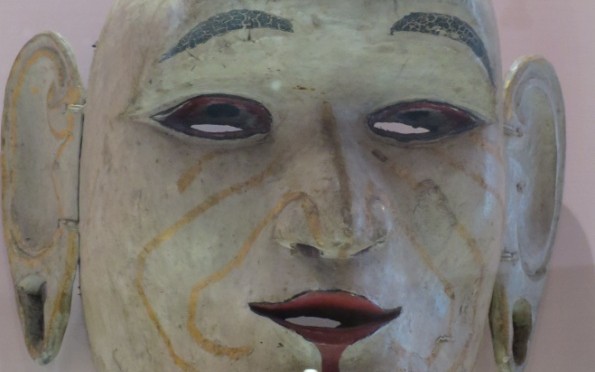


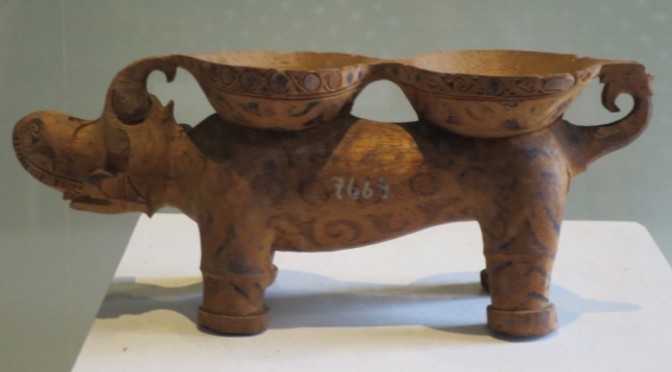





![Hisang (earring), Wood, Uma-Tow, Apo Kayan, East Kalimantan [Inv.9874] Decorated with aso dragon motif, worn by women.](http://karen.jokar.com.au/wordpress/wp-content/uploads/2015/01/image111.jpeg)



